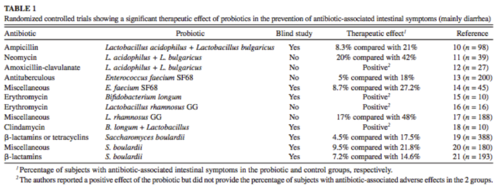Lactobacillus rhamnosus GG (ATCC 53103) and its Probiotic Use
Introduction
Lactobacillus rhamnosus GG (LGG) is a bacterial strain of L. rhamnosus that was isolated in 1983 and filed for patent in 1985 by Barry R. Goldin and Sherwood L. Gorbach (therefore the surname letters GG). It is one of the most widely studied strains for its use in probiotics and it has been rarely known to cause disease or infection. Lactobacillus rhamnosus GG primarily exists naturally in the human digestive system, but can also be found in the human urinary and genital systems. It can also be found in various product applications, primarily dairy products, such as yogurt, fermented milk, pasteurized milk, and semi-hard cheese.3 Lactobacillus rhamnosus GG is generally known to help the human body maintain a “good balance” of bacteria to prevent the growth of malignant bacteria in the stomach and intestines.1 Consequently, the use of Lactobacillus rhamnosus GG in probiotics have become popular and has been proven to treat or prevent gastrointestinal diseases and infections, atopic dermatitis, allergic reactions, dental caries, nasal pathogens. Because the probiotic use of Lactobacillus rhamnosus GG is relatively new, it had not yet been approved by the FDA to treat any disease.1 However, the first commercial use of probiotics with Lactobacillus rhamnosus GG was launched in Finland in 1990 under the Gefilus® brand. Recently, new studies have been conducted to find probiotic use in the human oral cavity.
Other examples:
Bold
Italic
Subscript: H2O
Superscript: Fe3+
Scientific Basis

L. rhamnsosus GG grown to stationary phase showing multiple pili and an isometric bacteriophage (black arrow), the pilus ultrastructure (white arrow) and pili clustered at the cell poles. This photo was taken by Kankainen et al. in 2009 who demonstrated that the SpaC protein was essential in
L. rhamnsosus GG binding to human-mucus.
Preventing and Treating Disease and Infection

L. rhamnsosus GG shows that 17% experienced diarrheal symptoms with receiving
L. rhamnsosus GG compared to 48% in the placebo group. This table was constructed by Marteau et al. in 2001 who analyzed the various effects of probiotic strains on gastrointestinal diseases and infections.
Gastrointestinal Diseases and Infections
There are several studies that have reported the use of Lactobacillus rhamnosus GG to either treat or prevent various forms of diseases and infections in the stomach and intestines. The most common use for Lactobacillus rhamnosus GG is to treat diarrhea symptoms in acute diarrhea, Traveler’s diarrhea, antibiotic associated diarrhea, and gastroenteritis. Most of these studies have been conducted with infants or children.
Acute Diarrhea: The European Society for Pediatric Gastroenterology, Hepatology, and Nutrition conducted the most extensive trial using Lactobacillus rhamnosus GG for the treatment of moderate to severe diarrhea in children with 287 children aged 1-36 months from 10 countries. They found that patients who received Lactobacillus rhamnosus GG had decreased severity and shorter duration of the illness, a shorter hospital stay, and decreased likelihood of persistent diarrheal illness than patients who did not take Lactobacillus rhamnosus GG supplements. Another study was done with 137 children aged 1-36 months who were admitted to the hospital with diarrhea and the children given Lactobacillus rhamnosus GG had a significantly lower duration of illness. Similar studies have been conducted in Thailand and Pakistan in which treatment with Lactobacillus rhamnosus GG substantially decreased duration and severity of symptoms. One preventative study was performed with undernourished children aged 6-24 months in Peru that showed a significant decrease in the rate of incidence of diarrhea among children who received Lactobacillus rhamnosus GG who were not being breast-fed.
Traveler’s Diarrhea: Individuals traveling to less-developed countries with warmer climates may experience the debilitating symptoms of Traveler’s diarrhea, which has been known to occur in about 50% of travelers who visit high-risk areas. One study was conducted in which American tourists were given capsules containing Lactobacillus rhamnosus GG powder or a ethyl cellulose placebo. The study found that the risk of having diarrhea on any given day was 3.9% for those receiving the Lactobacillus rhamnosus GG capsules compared with the 7.4% for individuals receiving the placebo and the impact of Lactobacillus rhamnosus GG did not vary as a function of gender or age.6
Antibiotic-Associated Diarrhea (ADD): Diarrhea has been reported to occur in a little under 20% of patients who clinically use antibiotics.5 ADD is caused by a microbial imbalance that decreases the fermentation capacity of the colon decreases the endogenous flora that is usually responsible for colonization resistance.5 A number of studies have been conducted in the ability of probiotics with Lactobacillus rhamnosus GG including a study of 119 children who received antibiotics for respiratory infections and during the first two weeks after antibiotic treatment had an ~70% reduction in diarrheal symptoms than patients receiving the placebo.4 Another study with 202 children receiving oral antibiotics found that 8% of children who received Lactobacillus rhamnosus GG with their antibiotics experienced diarrheal symptoms compared with 26% who received the pacebo.5 A study with adults found that patients who received antibiotic treatment to kill Helicobater pylori found that those who received Lactobacillus rhamnosus GG experienced significantly less nausea and diarrhea.5
Safety of Probiotic Use
Include some current research in each topic, with at least one figure showing data.
Conclusion
Overall paper length should be 3,000 words, with at least 3 figures.
References
Lee, Y. K., and Seppo Salminen. Handbook of probiotics and prebiotics. Hoboken, NJ: John Wiley & Sons, 2009.
Edited by (Hannah Whittemore), a student of Nora Sullivan in BIOL187S (Microbial Life) in The Keck Science Department of the Claremont Colleges Spring 2013.
